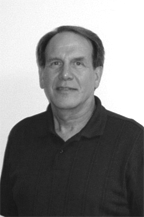Environment
2008-02-01 10:12:00
How does a septic system/tank operate?
QUESTION: I live out in the country…at first I loved the idea…but there are problems I didn’t think of…like having the septic tank pumped out! Why do I have to do this so often?
ANSWER: Living the “good life” out in the country like you do is such a romantic notion that millions of people have made that move over the last half century or so. Fresh air, nature’s wildlife all around you…and the feeling of freedom you can have when there’s absolutely no sign of other people within sight or sound of you…it’s all good! But in the real world, handling the waste products that are the result of people living in a certain location is a very real need. And there are basically two ways to do it. The first way is to install a lagoon system on the property. A lagoon pond is a residential waste stabilization system commonly used for onsite sewage treatment in low-population areas where soils are not suited for conventional absorption field systems such as septic tanks with their lateral fields. We’ll explain more about those in a minute. A lagoon pond is designed and dug, and the waste is then piped into the pond directly through a waste pipe from the house to the lagoon pond. This operation achieves pretty much the same result as a normal sewer system you might have in a city or town. Other than mowing the grass and weeds, there’s not a lot of ongoing maintenance needed for a well designed lagoon system.
The most common domestic wastewater and sewage treatment system used in rural areas like yours is the septic tank-soil absorption system. The septic tank removes settle-able and floatable solids from the waste water. The soil absorption field then filters and treats the clarified septic tank effluent and distributes it through the soil by way of the lateral fields. Removing the solids from the wastewater protects the soil absorption system from clogging and eventual failure. In addition to removing solids, the septic tank also promotes the biological digestion of a portion of the solids, and stores the remaining undigested portion.
The first stage of the treatment system, the septic tank, removes solids by holding wastewater in the tank. This allows the heavier solids to settle as sludge and the lighter particles to form as scum at the top. To accomplish this, wastewater should be held in the tank for at least 24 hours. Up to 50 percent of the solids retained in the tank will soon decompose, while the remainder accumulate in the tank. Biological and/or chemical additives are not needed to aid or accelerate decomposition. As a septic system is used, sludge continues to accumulate in the bottom of the septic tank. Properly designed tanks have enough space for up to three years safe accumulation of sludge. When the sludge level increases beyond this point, sewage has less time to settle before leaving the tank so that more and more solids escape into the absorption area. If too much sludge accumulates, no settling at all occurs before the sewage flows to the soil absorption field. Infiltration of sludge into the soil absorption field laterals can and will cause a complete system failure. To prevent this, the tank must be pumped out periodically. The material pumped is known as septage, and is pumped into a fairly large tanker truck for proper hauling and disposal.
The next stage of the treatment system, the lateral or “leach” field, is the perforated piping system that is laid out in such a way as to deliver the wastewater moving on out of the septic tank into the yard area where it can escape into the soil. You’ve all seen or heard that “the grass is always greener over the septic tank”…well it’s true. This grass is always getting a full treatment of “fertilizer”, and so stays greener than the grass not being so blessed.
This leach field should be constructed in such a manner to promote the movement of the liquid waste out to the ends of the lateral field without hesitation. Downhill is a good idea. An improperly installed septic system layout will shorten the life of the entire operation. Making certain that the lateral field is not in a low water or wetlands area is a very good idea. Saturated soil cannot absorb additional moisture.
Remember that when dealing with a sewage system of either of these descriptions, human contact with sewage is a serious public health risk. Drinking water contaminated with sewage can cause health problems such as diarrhea, nausea, cramps, dysentery and hepatitis.
Exposure to sewer gases can also cause discomfort and illness, and possibly in a confined area, even death. Just as in most other plumbing related problems, the disposal of waste and wastewater can be made simpler if you let someone who does that kind of work professionally every day help you with your own particular needs. More next month…


